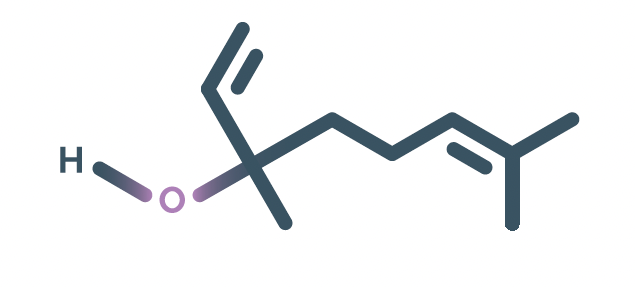Lavender: oil of communication & calm
Each month I’m going to share a new post about the magic of essential oils.
This month we’re learning about Lavandula Angustifolia, lavender!
While the emotionally-grounding effects of oils won me over early on (more on that soon), when I was first introduced to essential oils, my inner scientist also wanted to know, ‘but, how?’, and my curiosity led me to take a deep dive into the science.
It’s pretty cool. So - my blogs are going to include some nerdy stuff too! (sorry - science is cool and we know that.) It might look like a lot, but for those of you who are curious, I think you’ll enjoy the extra intel!
THANK YOU MAMA NATURE
Essential oils (EOs) come from plants - but not all plants produce them. Of the 17,500 plants in the world, only 3,000 produce EOs. It requires a lot of energy for the plant to produce EOs, so they produce them sparingly when they’re most needed: defense, healing and growth. EOs are basically the plants own immune system - hence their benefits to our own.
About Lavender (with some nerdy stuff!)
“Lavender, was popularized by Romans for washing, bathing, and using it as a hair perfume. Modern science now confirms and attributes its effect to various phytochemicals.’’
-Dr. Zeel Gandhi, Chief Ayurvedic Doctor, Vedix
ACTIVE COMPOUNDS
Lavender is primarily made up of two compounds: linalyl acetate and linalool.
Above: the atoms that make up the chemical compound ‘Linalool’ in lavender EO.
Each oil has an atomic and molecular structure - these give them their therapeutic value and aroma.
BENEFICIAL PROPERTIES OF LAVENDER
antibacterial
anti-inflammatory
anti-venemous
calmative
cytophylactic (restores damaged skin)
Linalyl acetate has been found to suppress spore formation, linalool inhibits germination of fungal growth.
WAYS TO TAKE EOs
Topically (on the skin), aromatically (inhaaaale), and internally.
(About the ‘internally’ bit: I’ve only ever taken DoTerra oils internally, because they’re famously known for their purity, and are certified pure tested grade (CPTG), meaning they go through rigorous testing to ensure that they are free from contaminants and synthetic fillers (adulterants.)
A bit about how EOs work aromatically - our olfactory system.
Our sense of smell is called ‘olfaction’. Scientists have found that olfactory receptors aren’t just in your nose, but also in the kidneys, kidneys, gastrointestinal tract, muscles, heart, pancreas, liver, lungs, and skin! How do they work? When we ‘smell’, the olfactory sensors in our nose create an electric response, which travels via our olfactory nerves to the ‘olfactory bulb’. Which sends the information to the brain through a bundle of nerve fibers and cells called the, olfactory tract. The olfactory system is connected to the limbic system (hippocampus and hypothalamus.), where emotions and memories are stored. (An amazing example of this is, think about a time you’ve caught a whiff of a familiar old perfume - and how it immediately transports you through space and time to those memories? That’s the power of smell and the limbic system!)
Ok, now the fun part! Ways to use Lavender oil
APPLICATIONS
My personal fave ways for incorporating the calming benefits of lavender into my life?
I add a few drops to my hair conditioner, my face cream (big time!), inhale before sleep, and in the laundry.
Hair & scalp: add to your conditioner, use a few drops on scalp to clear dandruff, scrunch a few drops through your hair for relaxing benefits throughout the day.
To feel less anxiety and stress: rub a few drops into the palms of your hands, the cup them over your nose and mouth and take 3 big, indulgent inhales. Diffuse around the house, add a few drops to your bath. Add to carrier oil for a soothing massage.
Sleep: Add to your bath, diffuse by your bedside, or apply two drops to your forehead, neck and soles of your feet. Even sprinkle on your pillow.
Headaches / migraines: gently massage drops into your forehead, temples and back of neck.
Skin inflammation: dab straight onto small areas or dilute 1 part with 5 parts oil to cover larger affected areas.
Wounds: use direct application to clean wound or make up a spritzer and spray wound. Add a few drops to gauze of bandage.
Minor burns & sunburn: make up a spritzer, shake and spray affected area; or apply direct, or gently with a massage oil.
Muscular aches & pains: apply directly, or diluted 1 part:5 parts high quality oil and rub where necessary.
Internally: you can take 1-2 drops under the tongue, in a capsule or in water (& see recipes below!)
Household: I have a bottle beside the washing machine, and add some drops to each load, and to your clothes dryer. Bliss.
RECIPES
Lavender is surprisingly versatile! It’s particularly comforting added to an oat milk hot chocolate, even add it to your baking to augment your sweet treats.
Recipe: Lavender Chocolate disks
Chamomile & Lavender Gummies
So - your kid loves candy - but you don’t love all that sugar?
This Chamomile and lavender gummy recipe by Dr Brook Merkel is a win-win! For joint-health and improved sleep.
Last but not least - a diffuser blend.
Rest-well diffuser blend
2 drops lavendar
2 drops cedarwood
2 drops frankincense
This blend is lovely diffusing next to your bed to calm active thoughts.
Intuitive Communication blend
3-5 drops each of lavender, cypress and ylang ylang in your diffuser if your intuition could use a boost.
(thanks to Elena Brower for this one!)
Lavender 15ml
Each 15ml bottle contains 240 drops of EO! About 6 months worth.
If you’re interested in purchasing a lavender oil, and getting wholesale, email me at: freda@esho.co.nz x
Selected oils are also on sale at NowBreathe yoga studio in Kilbirnie, Wellington, where I teach.



